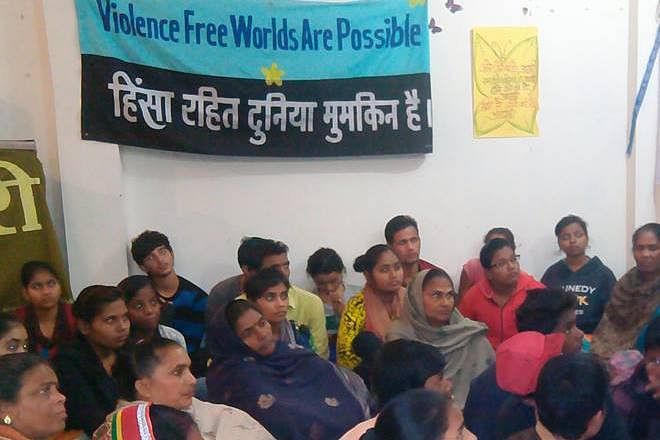The committees suggested by the court can hinder women’s recourse to justice, experts feel.
The Supreme Court’s verdict last week to curb the misuse of Section 498-A, popular as the “dowry law”, has triggered a backlash from women’s rights groups. Many experts fear that the apex court verdict runs the risk of undermining the progress made by decades of women’s rights struggles on the pretext of protecting ostensibly innocent men.
The law, whose scope is wider than dealing with cases of dowry harassment — it also encompasses provisions against domestic violence and mental harassment — has consistently been criticised for its susceptibility to misuse by estranged wives to harass spouses. In the past, the SC has reached out to protect innocent husbands and in-laws from false accusations and restrained police officers from making automatic arrests under 498-A and demanded more thorough police and magisterial proceedings.
What sets apart the verdict in Rajesh Sharma’s case is the introduction of the “Family Welfare Committees”, which would consist of paralegal volunteers, social workers, retired persons, wives of working officers and other citizens, who may be found suitable and willing to examine the women’s complaints before police can take action.
“There are various facts that were perhaps not placed before the court. The judgment requires the process of committee counselling, which makes a complainant woman, who is already being harassed and being subjected to physical or mental cruelty, more vulnerable to a dowry killing, or increased harassment,” says Supreme Court advocate Karuna Nandy.
The move thus fails to realise the emotional and mental toll this may take on the women who are complainants and survivors of abuse, she explains.
“In cases of domestic violence, counselling by psychologists and especially by untrained counsellors is not advised by experts in the field, because often there’s a huge power imbalance between the harassers and the harassed. It’s why the crime was committed in the first place,” she adds. Arguing against a “pro-family” counselling environment, she said that trying to counsel a family where a woman is in serious danger isn’t safe.
Others point out that the state has not managed to even rid the existing mechanisms of micro-aggressions and hostility towards women.
“The government has still not been able to implement any pre-existing recommendations such as properly functioning Internal Complaints Committees or Local Complaints Committees for workplace sexual harassment, so what Family Welfare Committees is it talking about now?” asks Chaitali, who works as a co-ordinator for Jagori’s ‘Ending Violence Against Women’ campaign. “The police even today ask complainants, ‘why do you fight with your husband?’ or ‘If you don’t cook, what else do you expect?’” she adds.
The recommended committees are also likely to give NRI or absconding husbands considerable time to escape before FIRs get accounted for. The SC verdict also states that there will no longer be impounding of passports nor issuing of Red Corner Notices. “There is nothing to prevent a violent husband from doing a Vijay Mallya trick to evade the due process of law,” senior advocate Indira Jaising wrote in The Indian Express.
Further, betraying the deep misogyny rooted in the judicial system itself, the SC judgement said, “most of such complaints are filed in the heat of the moment over trivial issues”.
It also cites low conviction rates as statistical evidence to indicate the likelihood of false allegations. The National Crime Record Bureau (NCRB) data for 2012, for example, illustrates how chargesheets reached an exponential high of 93.6 per cent while the conviction rate was at a staggering low of 14.4 per cent.
What these numbers do not reveal is that most convictions do not happen as a result of out-of-court settlements by the husband, mediation based settlements, or threats of intimidation to the complainants, often compounded by the class privilege of the women who file a complaint, said noted women’s rights lawyer and director of Mumbai-based Majlis, Flavia Agnes. Women from lower class statuses often cannot afford to successfully battle it out in court, and thus many of these cases result in acquittals, she added.
“How many out of a 100 women affected even go to the police to file a complaint?” asks Chaitali, even as she highlights the need for women rights groups to look within. “We kept saying that indeed, the extrapolations from (NCRB) data gives a wrong message, but we haven’t created a counter data alternative (from the women’s complainants accounts) yet to disprove it.”
With the latest move of the Supreme Court, however, women’s rights groups might consider expediting research in this area.
Picture courtesy: Jagori’s Facebook page






